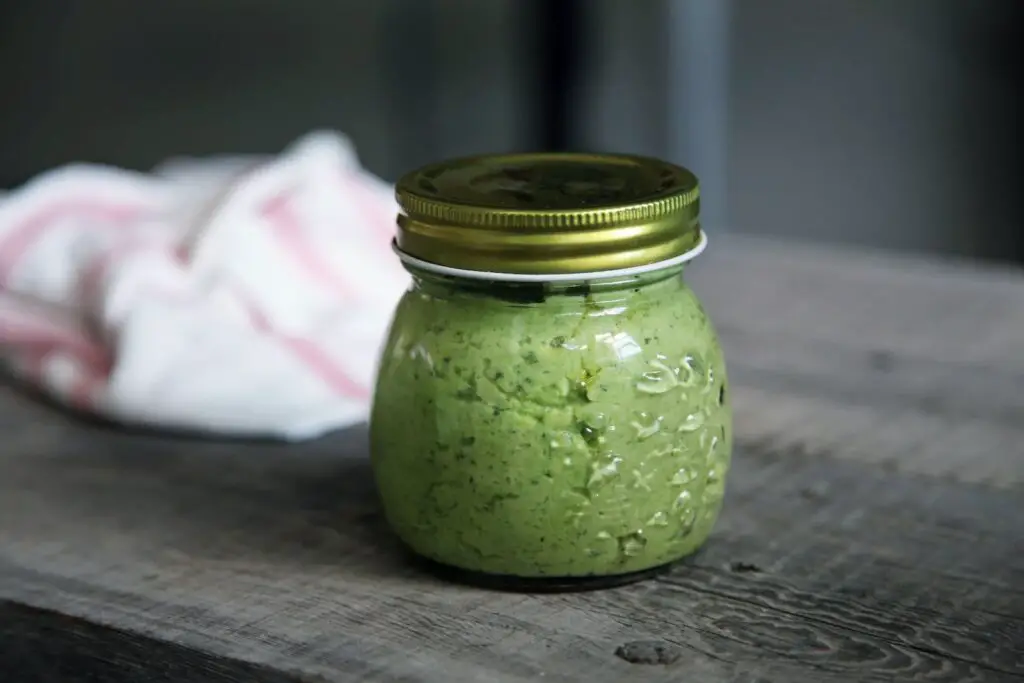
Pesto is a versatile sauce that can be used in a variety of dishes, from pasta to sandwiches. However, like any food product, pesto can go bad over time. It is important to know how to tell if your pesto has gone bad in order to avoid any potential health risks and to ensure that your meal tastes as good as possible.
One way to tell if pesto is bad is by checking its appearance. If the pesto has turned brown or has a moldy appearance, it is likely that it has gone bad and should be discarded. Another way to tell if pesto is bad is by smelling it. If the pesto has a sour or rancid smell, it is likely that it has gone bad and should not be consumed.
It is important to note that pesto can also go bad if it has not been stored properly. Pesto should be stored in an airtight container in the refrigerator and used within a week of opening. If you are unsure about the freshness of your pesto, it is always better to err on the side of caution and discard it.
Table of Contents
Understanding Pesto
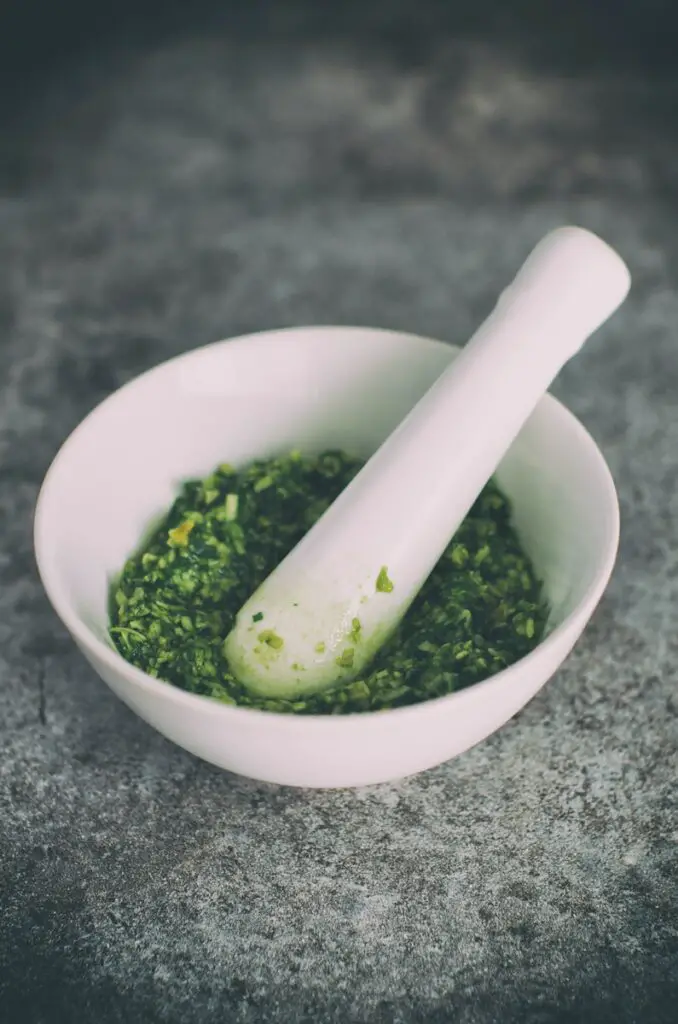
Pesto is a classic Italian sauce that is typically made with basil, pine nuts, olive oil, garlic, and Parmesan cheese. It is a versatile sauce that can be used in a variety of dishes, from pasta to sandwiches.
Basil is the key ingredient in pesto, giving it its distinct flavor and aroma. The quality of the basil used in pesto can greatly affect its taste. Fresh basil leaves are preferred, but dried basil can also be used.
Pine nuts are another important ingredient in pesto. They add a nutty flavor and a bit of crunch to the sauce. However, pine nuts can also be a common source of spoilage in pesto. Rancid pine nuts can give the sauce an off flavor and smell.
Olive oil is used to bind the ingredients together and give the sauce a smooth consistency. Extra-virgin olive oil is preferred for its fruity flavor and aroma.
Parmesan cheese is added to pesto to give it a salty, savory flavor. However, the cheese can also be a source of spoilage if it is not stored properly.
Garlic is used to give pesto a pungent flavor and aroma. Fresh garlic cloves are preferred, but garlic powder can also be used.
There are different types of pesto, including traditional basil pesto, sun-dried tomato pesto, and arugula pesto. Each type has its own unique flavor and can be used in different dishes.
In summary, understanding the ingredients in pesto and their role in the sauce can help identify when pesto has gone bad. It is important to check for any signs of spoilage, such as off flavors, smells, or mold.
How to Store Pesto
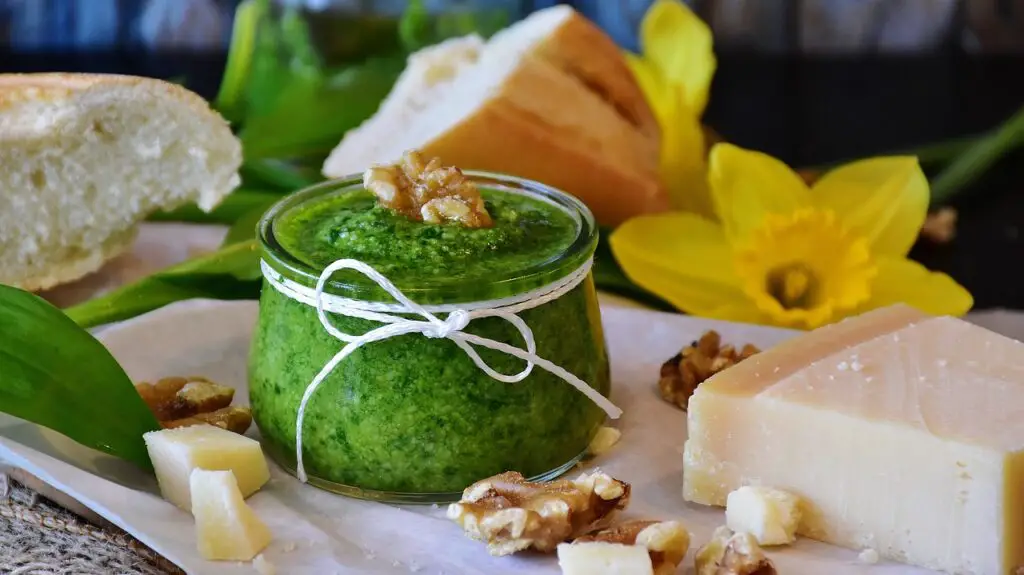
Pesto is a delicious sauce that can be used in many different dishes. However, if it is not stored properly, it can spoil quickly. Here are some tips on how to store pesto to keep it fresh for longer.
Refrigerate in an Airtight Container
Once you have opened a jar of pesto, it is important to transfer it to an airtight container. This will help prevent air from getting in and causing the pesto to spoil. Mason jars or plastic containers with tight-fitting lids work well for this purpose.
Keep it in the Fridge
Pesto should always be stored in the fridge. This will help slow down the growth of bacteria and keep the sauce fresh for longer. It is important to note that pesto should not be stored at room temperature, as this can cause it to spoil quickly.
Store in a Cool, Dark Place
When storing pesto, it is important to keep it in a cool, dark place. This will help prevent the sauce from spoiling due to exposure to light or heat. A kitchen cupboard or pantry is a good place to store pesto, as long as it is not near any sources of heat or light.
Use it Within a Week
Pesto should be used within a week of opening. This will help ensure that it is fresh and safe to eat. If you have not used all of the pesto within a week, it is best to discard the rest.
By following these tips, you can ensure that your pesto stays fresh for longer and is safe to eat.
Storing Homemade Pesto
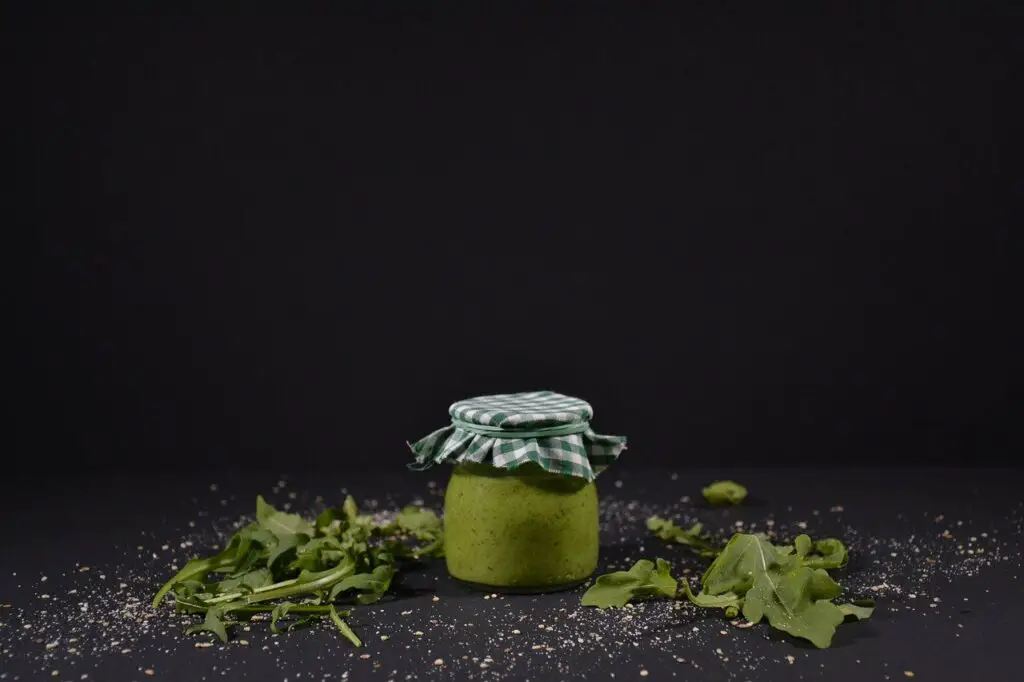
When it comes to homemade pesto, proper storage is crucial to ensure that it stays fresh and flavorful for as long as possible. Here are some tips on how to store homemade pesto:
- Refrigerate: Homemade pesto should always be stored in the refrigerator. Place it in an airtight container and make sure it is tightly sealed. This will help prevent the pesto from oxidizing and turning brown.
- Use within a week: Homemade pesto should be used within a week of making it. This will ensure that it is still fresh and flavorful. If you have any leftover pesto after a week, it is best to discard it.
- Freeze: If you have a lot of homemade pesto and you know you won’t be able to use it all within a week, you can freeze it. Place the pesto in an airtight container or freezer bag and store it in the freezer. Frozen pesto can last for up to 6 months.
- Thawing frozen pesto: To thaw frozen pesto, simply place it in the refrigerator overnight. You can also thaw it by placing the container in a bowl of warm water for a few minutes. Do not thaw pesto in the microwave, as this can cause it to become watery.
- Avoid using old basil leaves: When making homemade pesto, it is important to use fresh basil leaves. Old or wilted leaves can result in a pesto that is bitter and not as flavorful.
- Use a blender or food processor: When making homemade pesto, it is best to use a blender or food processor. This will help ensure that the pesto is smooth and well blended. If you don’t have a blender or food processor, you can still make pesto by chopping the ingredients by hand, but the texture may not be as smooth.
By following these tips, you can ensure that your homemade pesto stays fresh and flavorful for as long as possible.
Storing Store-Bought Pesto
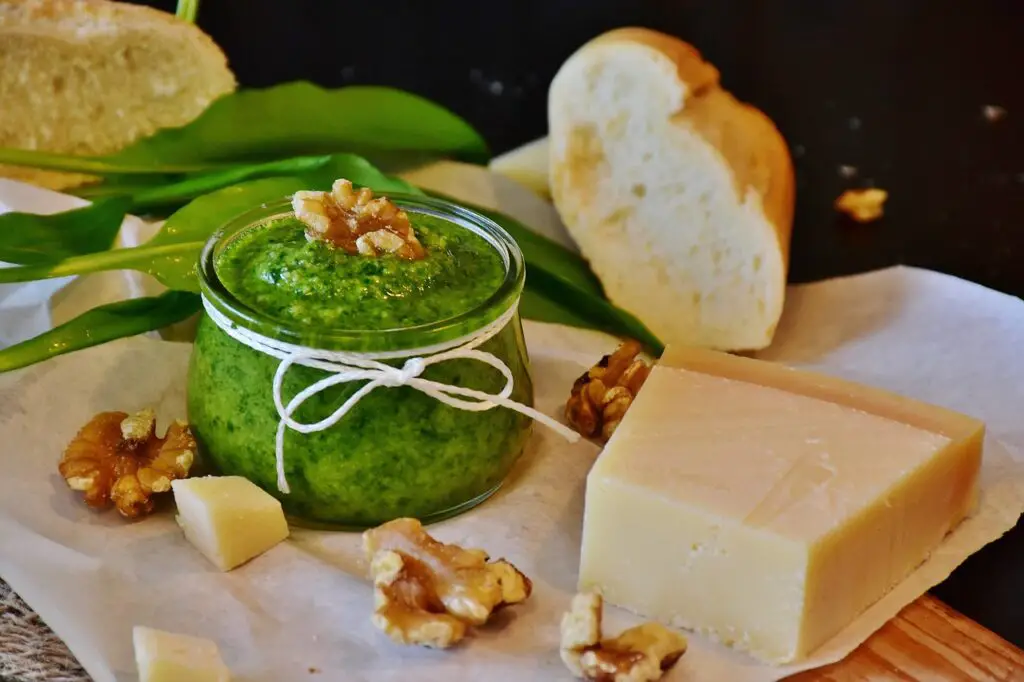
When it comes to store-bought pesto, it’s important to store it properly to ensure it stays fresh for as long as possible. Here are some tips for storing unopened and opened store-bought pesto:
Unopened Store-Bought Pesto
If you haven’t opened your store-bought pesto yet, it’s best to store it in a cool, dry place like a pantry or cupboard. Avoid storing it in direct sunlight or near sources of heat, as this can cause the oil in the pesto to go rancid.
Many store-bought pestos come in tins, which can be a great way to store them. Tins are airtight and help keep the pesto fresh for longer. If your pesto doesn’t come in a tin, you can transfer it to an airtight container to help keep it fresh.
Opened Store-Bought Pesto
Once you’ve opened your store-bought pesto, it’s important to store it in the fridge. This will help slow down the growth of bacteria and keep the pesto fresh for longer.
To store opened pesto, transfer it to an airtight container and make sure the lid is tightly sealed. Store it in the fridge for up to two weeks. If you notice any signs of spoilage, such as mold or an off smell, it’s best to discard the pesto.
Overall, storing store-bought pesto is relatively simple. By following these tips, you can help ensure your pesto stays fresh and delicious for as long as possible.
Freezing Pesto
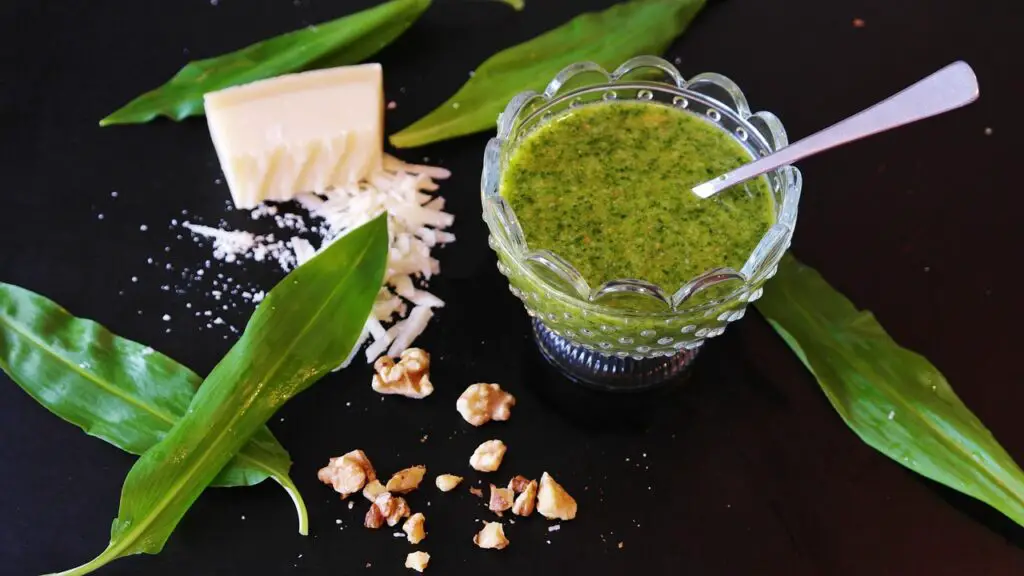
Freezing pesto is a great way to preserve it for later use. Here are some tips for freezing pesto:
- Use an ice cube tray: This is a great way to freeze pesto in small portions. Simply spoon the pesto into the ice cube tray and freeze. Once the pesto is frozen, you can transfer the cubes to a plastic bag or container for long-term storage in the freezer.
- Label and date: It’s important to label and date your pesto before freezing. This will help you keep track of how long it has been in the freezer and ensure that you use it before it goes bad.
- Freezer-friendly container: If you prefer to freeze your pesto in larger portions, use a freezer-friendly container. Make sure to leave some room at the top of the container for the pesto to expand as it freezes.
- Defrosting: When you’re ready to use your frozen pesto, simply remove it from the freezer and defrost it in the refrigerator. It’s important to avoid defrosting pesto at room temperature, as this can lead to bacterial growth.
- Use within 6 months: Frozen pesto can last up to 6 months in the freezer. After that, it may start to lose its flavor and texture.
Overall, freezing pesto is a great way to preserve it for later use. By following these tips, you can ensure that your pesto stays fresh and delicious for months to come.
Identifying Spoiled Pesto
Pesto is a delicious sauce made from basil, garlic, pine nuts, Parmesan cheese, and olive oil. However, like any other food, pesto can go bad over time. Here are some ways to identify if your pesto has gone bad:
Appearance
One of the first things to check is the appearance of the pesto. If there is any mold growing on the surface, it is a clear sign that the pesto has gone bad and should be discarded immediately. Additionally, if the pesto has turned brown or has a strange color change, it is also a sign of spoilage.
Smell
Another way to tell if the pesto has gone bad is to smell it. If there is a rancid odor or any other strange odor, it is a sign that the pesto has gone bad and should not be consumed.
Taste
If the pesto tastes off or has a strange taste, it is another sign that it has gone bad. The taste of the pesto should be fresh and vibrant, and any sour or bitter taste is a sign of spoilage.
Texture
The texture of the pesto can also be an indicator of spoilage. If the pesto has a slimy or gritty texture, it is a sign that it has gone bad and should not be consumed.
Storage
Proper storage of pesto is essential to prevent spoilage. It should be stored in an airtight container in the refrigerator and consumed within a few days. If the pesto has been stored for too long, it may have gone bad.
In summary, identifying spoiled pesto is crucial to prevent food poisoning and ensure that you enjoy the best flavor from your pesto. By checking the appearance, smell, taste, and texture, you can determine if the pesto has gone bad and should be discarded.
Effects of Spoiled Pesto
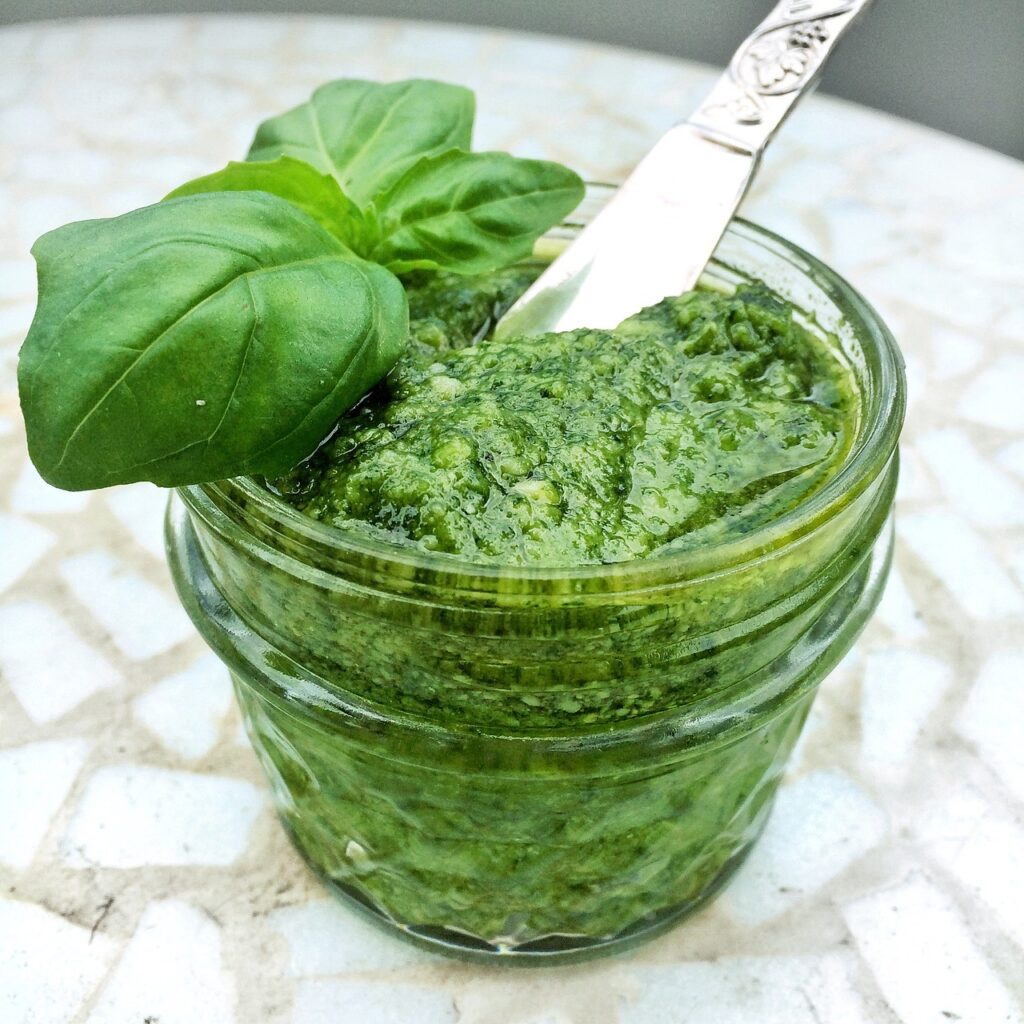
Spoiled pesto can have several negative effects on the body, including food poisoning and bacterial infections. It is important to know the signs of spoiled pesto to avoid consuming it and risking these effects.
Spoiled pesto can contain harmful bacteria that can cause food poisoning. Symptoms of food poisoning may include nausea, vomiting, diarrhea, stomach cramps, and fever. These symptoms can range from mild to severe, depending on the type and amount of bacteria consumed.
In addition to food poisoning, spoiled pesto can also cause bacterial infections. Bacteria such as salmonella, listeria, and E. coli can be present in spoiled pesto and can cause serious infections. These infections can lead to symptoms such as fever, chills, headache, and muscle aches.
Spoiled pesto can also have a negative impact on food safety. Pesto that has gone bad may have a sour or rancid smell, a change in color, or visible mold growth. Consuming spoiled pesto can lead to serious health issues, so it is important to always check the expiration date and signs of spoilage before consuming.
In summary, consuming spoiled pesto can have negative effects on the body, including food poisoning and bacterial infections. It is important to be aware of the signs of spoiled pesto and to always prioritize food safety when consuming any type of food.
Pesto Shelf Life
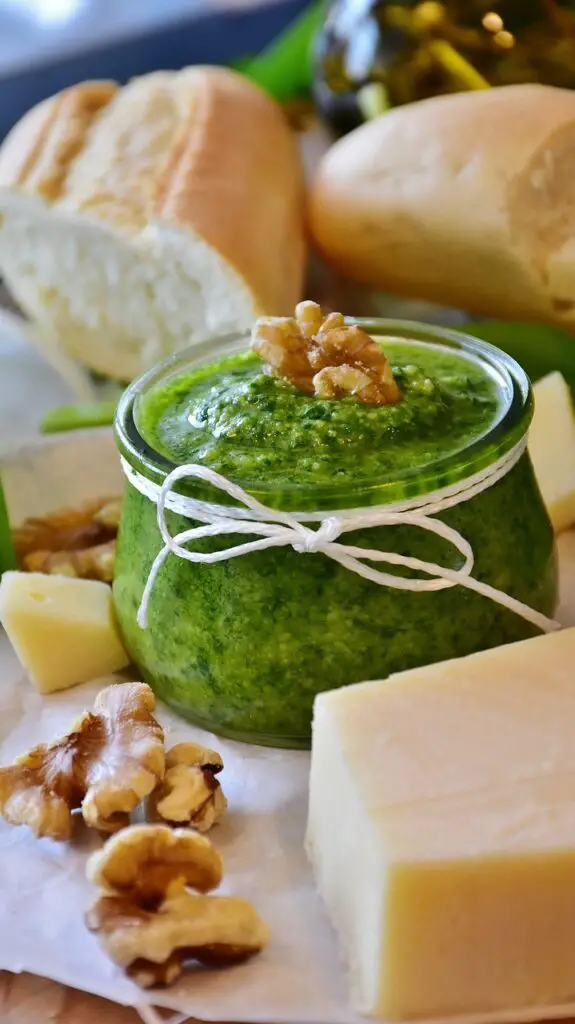
Pesto is a popular Italian sauce made from fresh basil, pine nuts, olive oil, garlic, and Parmesan cheese. It is a versatile sauce that can be used in a variety of dishes, including pasta, pizza, and sandwiches. However, like any other food product, pesto has a limited shelf life. In this section, we will discuss the shelf life of pesto and how to tell if it has gone bad.
Shelf Life
The shelf life of pesto depends on several factors, including the ingredients used, the storage conditions, and the type of packaging. Generally, homemade pesto lasts for about 5-7 days in the refrigerator. However, store-bought pesto may last for up to 2-4 weeks if it is unopened and stored in the refrigerator.
Best-By and Use-By Dates
Most store-bought pesto comes with a best-by or use-by date printed on the packaging. This date indicates the period during which the pesto is at its best quality. However, it does not necessarily mean that the pesto is unsafe to eat after the date has passed. It is important to note that these dates are not regulated by the FDA, so they may vary from one manufacturer to another.
Signs of Spoilage
There are several signs that indicate that pesto has gone bad. The most common signs include:
- Mold or discoloration: If you notice any mold or discoloration on the surface of the pesto, it is a clear sign that it has gone bad.
- Bad odor: If the pesto has a sour or rancid odor, it is a sign that it has gone bad.
- Change in texture: If the pesto has become watery or the texture has changed, it is a sign that it has gone bad.
In conclusion, pesto is a delicious sauce that can add flavor to a variety of dishes. However, it is important to consume it within its shelf life and to look for signs of spoilage before consuming it.
Pesto in Cooking
Pesto is a versatile Italian sauce that can be used in a variety of dishes, including pasta, chicken, sandwiches, pizza topping, and other Italian dishes. It is a flavorful blend of basil, garlic, pine nuts, Parmesan cheese, and olive oil that is typically served cold or at room temperature.
When cooking with pesto, it is important to keep in mind that it can be quite strong in flavor, so a little goes a long way. It is also important to use fresh, high-quality ingredients to ensure the best flavor.
Pesto can be used as a sauce for pasta dishes, such as spaghetti or linguine, or as a spread for sandwiches. It can also be used as a topping for pizza, either on its own or combined with other ingredients such as tomatoes or mozzarella cheese.
When using pesto in cooking, it is important to remember that it is a raw sauce, so it should not be cooked for an extended period of time. Instead, it should be added to the dish towards the end of the cooking process to preserve its flavor.
Overall, pesto is a delicious and versatile sauce that can be used in a variety of dishes. By using fresh, high-quality ingredients and adding it to dishes towards the end of the cooking process, you can ensure the best flavor and results.
Pesto Variations
Pesto is a versatile sauce that can be made with a variety of ingredients. While the traditional recipe calls for basil, pine nuts, garlic, Parmesan cheese, and olive oil, there are many variations that incorporate different herbs, nuts, and cheeses.
One popular variation is walnut pesto, which substitutes pine nuts with walnuts. This variation has a nuttier flavor and a slightly different texture. Cashew pesto is another alternative, which has a creamier texture and a milder flavor compared to traditional pesto.
For those who are looking for a vegan option, avocado pesto is a great choice. This variation uses avocado instead of cheese, and it creates a creamy and flavorful sauce that can be used as a spread or a dip.
There are also different brands of pesto available in the market, each with their unique flavor and texture. Mantova and Filippo Berio are popular brands that produce high-quality pesto.
It is important to note that pesto can also be used as a base for other sauces, such as guacamole. By adding avocado and lime juice to traditional pesto, you can create a delicious and unique guacamole that is perfect for dipping chips or vegetables.
Overall, pesto variations offer a range of flavors and textures that can be used in a variety of dishes. Whether you prefer the traditional recipe or a unique variation, pesto is a versatile sauce that can enhance the flavor of any meal.